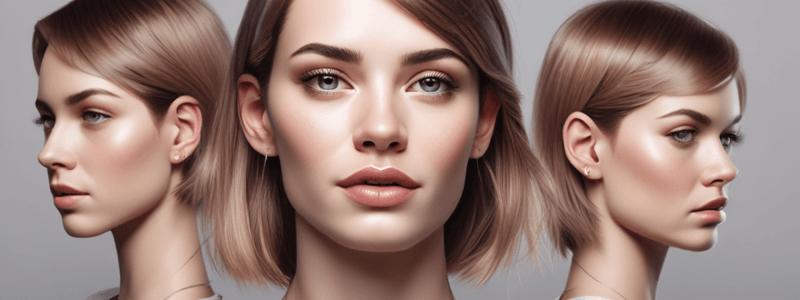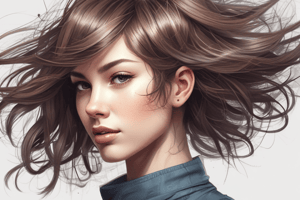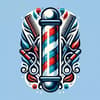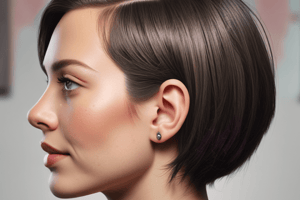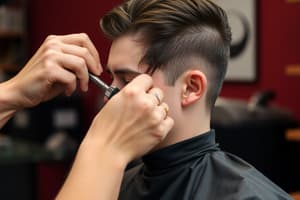Podcast
Questions and Answers
Which of the following is NOT one of the learning objectives outlined in the text?
Which of the following is NOT one of the learning objectives outlined in the text?
- Explain the importance of client consultation
- Discuss hair coloring techniques (correct)
- Identify tapering and blending areas
- Describe basic styling techniques
Which of the following anatomical features is NOT mentioned as influencing haircutting and styling?
Which of the following anatomical features is NOT mentioned as influencing haircutting and styling?
- Shoulder width (correct)
- Head shape
- Ear position
- Hair texture
According to the learning objectives, what is the purpose of defining design elements used in haircutting and styling?
According to the learning objectives, what is the purpose of defining design elements used in haircutting and styling?
- To comprehend the various techniques and approaches (correct)
- To understand the principles of color theory
- To study the historical evolution of hairstyles
- To learn about different hair product ingredients
Which of the following cutting tools is NOT mentioned in the learning objectives?
Which of the following cutting tools is NOT mentioned in the learning objectives?
Based on the learning objectives, which of the following statements is TRUE?
Based on the learning objectives, which of the following statements is TRUE?
Flashcards are hidden until you start studying
Study Notes
Learning Objectives in Haircutting and Styling
- Outlined learning objectives aim to enhance understanding of fundamental haircutting techniques and styling concepts.
- Objectives are designed to develop critical thinking and creativity in the application of haircutting and styling.
Anatomical Features Affecting Haircutting
- Influences on haircutting and styling include head shape, bone structure, and hair growth patterns.
- Specific anatomical features play a significant role in determining suitable styles and cuts.
Purpose of Defining Design Elements
- Defining design elements ensures a cohesive haircutting and styling process, emphasizing balance, proportion, and harmony.
- Understanding these elements allows stylists to create tailored looks that suit individual characteristics.
Cutting Tools in Haircutting
- Commonly mentioned cutting tools include scissors, razors, and clippers, essential for diverse cutting techniques.
- Familiarity with these tools enhances a stylist's versatility and precision in executing various haircuts.
Truthfulness of Statements Based on Learning Objectives
- Statements derived from learning objectives focus on foundational skills and the importance of artistry in haircutting.
- True statements emphasize the integration of technical ability with creative expression in hairstyling practices.
Studying That Suits You
Use AI to generate personalized quizzes and flashcards to suit your learning preferences.
